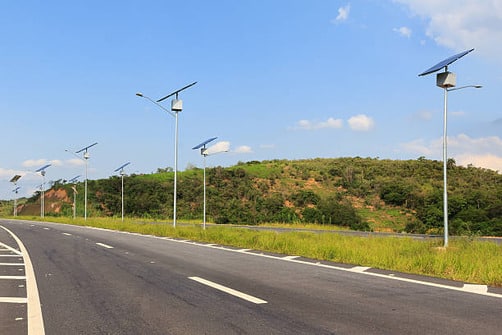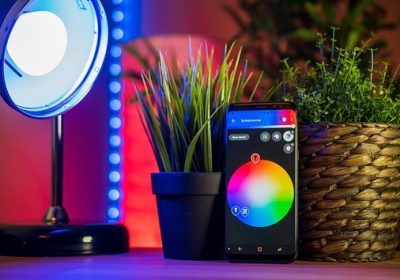Solar Street Lights: Shedding Light on Green Technology
Do you ever stop and wonder how we can harness the power of the sun to light up our streets at night? Well, prepare to be amazed as we shed light on the incredible world of solar street lights. These innovative lighting solutions not only contribute to a greener and more sustainable future, but they also offer a range of benefits that might just leave you jaw-dropped.
In this article, we’ll take you on a captivating journey through 10 jaw-dropping facts about solar street lights. From their extraordinary efficiency to their cost-saving potential, we’ll explore every aspect that makes these lights a game-changer in the world of green technology.

So, if you’re curious about how solar street lights work, the advantages they bring, and their impact on the environment and communities, keep reading. Get ready to be enlightened as we uncover the fascinating world of solar street lights and the impact they’re making in illuminating our future.
Summary:
- Solar street lights are a revolutionary form of lighting technology that utilize the power of the sun to illuminate streets at night, contributing to a greener and more sustainable future.
- These lights consist of various components such as solar panels, lithium-ion batteries, motion sensors, and LED lights, which work together to provide efficient and clean energy for outdoor lighting.
- The benefits of solar street lights extend beyond energy efficiency, including a reduced carbon footprint, independence from grid power, and their suitability for remote areas.
- Proper maintenance, including regular inspections and cleaning, is essential to ensure the longevity and optimal performance of solar street lights. In addition, advancements in solar lighting technology continue to revolutionize their design and capabilities, promising a brighter future.
The Evolution of Solar Street Lights
Solar street lights have come a long way since their inception, evolving into a reliable and efficient green technology for outdoor lighting. Let’s explore the fascinating journey of these innovative lights and how they have revolutionized the way we illuminate our streets.
Early Beginnings
In the early 1900s, solar-powered lighting systems were already being experimented with as a solution for outdoor illumination. These early solar street lights utilized lead-acid batteries and were relatively inefficient compared to today’s advanced models.
Transition to Improved Technology
As the world faced energy crises and a growing awareness of environmental concerns, solar street lights gained traction as a sustainable alternative to traditional grid-powered street lights. This led to advancements in solar lighting technology, including the use of high-efficiency LED solar lights and inbuilt lithium-ion batteries.
Enhanced Energy Efficiency
One of the key advantages of solar-powered street lights is their energy efficiency. By harnessing the power of the sun, these lights convert solar energy into electrical current, which is stored in the rechargeable battery. This energy can then be used to illuminate outdoor areas, reducing reliance on grid power and lowering carbon footprints.
Built-in Sensors for Smart Lighting
Modern solar street lights often come equipped with innovative features such as built-in sensors, including motion sensors and daylight sensors. These smart lighting capabilities allow the lights to automatically adjust their brightness based on ambient light levels or detect motion for enhanced security and energy savings.
Durability for Challenging Environments
Solar street lights are built to withstand various weather conditions, making them suitable for outdoor installations in remote areas. With durable materials and waterproof designs, these lights can effectively operate even on rainy days.
Long Lifespan and Low Maintenance
Thanks to advancements in solar lighting technology, the lifespan of solar street lamps has significantly increased. LED fixtures, known for their long lifetimes, are often incorporated into solar street lights, ensuring years of reliable operation. Additionally, regular maintenance is minimal, with no need for extensive upkeep as with traditional street lights.
Pioneering Clean Energy Solutions
The development and widespread adoption of solar street lights have contributed to the promotion of clean and sustainable energy sources. By harnessing the sun’s power, these lights help reduce reliance on fossil fuels, decrease carbon emissions, and promote a cleaner and greener environment.
Understanding Solar Street Lights
Solar street lights are an innovative form of outdoor lighting that harnesses the power of the sun to illuminate streets, pathways, and other outdoor areas. They offer numerous benefits compared to traditional street lights, making them a popular choice for eco-conscious individuals and communities. In this section, we will delve into the intricacies of solar street lights, exploring their components, functionality, and advantages.(Keywords: solar street light, solar-powered street light, outdoor lighting)
Components of Solar Street Lights
Solar Panel: The solar panel is the heart of a solar street light. It is responsible for capturing sunlight and converting it into electrical energy. These panels are typically made of high-quality photovoltaic cells that generate electricity when exposed to sunlight.
Lithium-ion Battery: Solar street lights are equipped with lithium-ion batteries that store the electrical energy generated by the solar panels. These batteries ensure that the lights can operate even during periods of low sunlight or at night.
LED Lights: Light Emitting Diodes (LEDs) are the primary lighting source used in solar street lights. LEDs offer high efficiency, long lifespan, and excellent illumination, making them ideal for outdoor lighting applications. These lights are available in various wattages, providing flexibility in brightness levels for different areas.
Motion Sensors: Many solar street lights incorporate built-in motion sensors that detect movement and adjust the light’s brightness accordingly. This feature helps conserve energy by ensuring that the lights only operate at their full capacity when needed.
Remote Controls: Some advanced solar street light models come with remote controls, allowing users to adjust settings such as brightness levels, timer settings, and motion sensor sensitivity.
How Solar Street Lights Work
Solar street lights operate using a simple yet effective mechanism. During the day, solar panels absorb sunlight and convert it into electrical energy, charging the lithium-ion batteries. As the sun sets, the lights automatically turn on, drawing power from the batteries to illuminate the surrounding area. The built-in sensors detect movement and adjust the intensity of the lights accordingly, ensuring energy-efficient operation throughout the night.
Advantages of Solar Street Lights
Solar street lights offer numerous advantages over traditional grid-powered street lights:
Energy Efficiency: Solar street lights rely on renewable energy from the sun, making them highly energy-efficient and environmentally friendly. They contribute to the reduction of carbon footprints and promote the use of clean energy.
Cost Savings: Once installed
Components of Solar Street Lights
Solar street lights are equipped with several key components that work together to harness solar energy and provide illumination for outdoor areas. Understanding these components is crucial for comprehending the functionality and benefits of solar street lights.
Solar Panel
The solar panel is the primary component of a solar street light system. It is responsible for converting sunlight into electricity through the photovoltaic effect. The solar panel is usually made up of multiple solar cells, each composed of layers of silicon and other materials that can generate an electrical current when exposed to sunlight.
Lithium-ion Battery
A high-quality lithium-ion battery serves as the energy storage unit in solar street lights. This type of battery is known for its durability, long lifespan, and ability to store a significant amount of energy. The lithium-ion battery ensures that solar street lights can operate efficiently even on cloudy or rainy days when there is limited sunlight.
LED Light Fixture
The LED light fixture is the lighting source in solar street lights. LEDs (Light Emitting Diodes) are highly energy-efficient and have a long lifespan. They produce bright and focused light, making them ideal for outdoor illumination. LED fixtures in solar street lights are designed to provide ample lighting while consuming minimal energy.
Motion Sensor
Many solar street lights are equipped with built-in motion sensors. These sensors detect movement within the range of the light and trigger the illumination. Motion sensors not only enhance the security aspect but also help conserve energy. When no motion is detected, the lights dim or turn off to save power, only activating when needed.
Controller
The controller serves as the brain of the solar street light system. It regulates and controls the charging and discharging of the battery, manages the operation of the LED light fixture, and ensures the overall efficiency of the system. The controller also provides additional functionalities such as timing schedules and dimming options.
💡 key Takeaway: Understanding the components of solar street lights, including the solar panel, lithium-ion battery, LED light fixture, motion sensor, and controller, is essential for comprehending how these systems harness solar energy to provide efficient and environmentally-friendly outdoor lighting solutions.
Benefits of Solar Street Lights
Solar street lights offer numerous advantages over traditional lighting systems. Here are some key benefits that make them an attractive and sustainable choice for outdoor lighting:
Environmental-Friendly: Solar street lights harness the power of the sun, a clean and renewable energy source. This means they produce zero greenhouse gas emissions, helping to reduce carbon footprints and combat climate change.
Energy Efficiency: Solar street lights are highly energy-efficient since they generate their own electricity from sunlight. The solar panels collect and convert solar energy into electrical current, which is then stored in a rechargeable battery for later use. This drastically reduces the reliance on grid power, leading to significant energy savings.
Cost-effective: Though the initial installation cost of solar street lights may be higher than that of traditional street lights, they offer long-term cost savings. Since solar street lights operate independently of the grid, there are no ongoing electricity costs. Moreover, solar-powered lighting systems require much less maintenance compared to their traditional counterparts, resulting in additional cost savings over the lifespan of the lights.
Versatility and Adaptability: Solar street lights are suitable for various outdoor areas, including remote locations where grid power is not accessible. The built-in sensor and motion sensor technology allow these lights to automatically adjust their brightness based on the amount of light available, making them ideal for areas with different lighting requirements.
💡 key Takeaway: Solar street lights have numerous benefits, including environmental-friendliness, energy efficiency, cost-effectiveness, and adaptability to various outdoor areas. These lights provide reliable and sustainable lighting solutions while reducing carbon footprints and saving on energy costs.
How Solar Street Lights Work
Solar street lights are a fascinating example of green technology, harnessing the power of the sun to provide efficient and sustainable lighting solutions. In this section, we will delve into the inner workings of solar street lights and explore the key components that enable them to function.
Solar Panel: The core component of a solar street light is the solar panel, which converts sunlight into electrical energy. These panels, usually made of high-quality photovoltaic cells, absorb sunlight during the day and convert it into direct current (DC) electricity.
Lithium-ion Battery: To store the generated electricity for use during nighttime or cloudy days, solar street lights are equipped with lithium-ion batteries. These rechargeable batteries have a higher energy density and longer lifespan compared to traditional lead-acid batteries, making them an excellent choice for solar lighting systems.
Built-in Sensor Technology: Solar street lights are typically fitted with built-in sensors that detect the ambient light levels and automatically turn the lights on and off accordingly. For instance, a motion sensor may activate the lights when it detects movement in the surrounding area, ensuring optimal energy efficiency and only providing illumination when needed.
LED Light Fixture: The illumination element of solar street lights is provided by energy-efficient LED (Light Emitting Diode) light fixtures. LED technology offers several advantages over traditional light sources, including higher energy efficiency, longer lifespan, and better brightness.
Charge Controller: A charge controller acts as the brain of a solar street light system. It regulates the flow of electricity from the solar panel to the battery, preventing overcharging or discharging and ensuring the optimal charging conditions for the battery.
Power Source: Solar street lights rely solely on the power generated from the solar panel and stored in the battery. They do not require a connection to the grid power, making them an ideal solution for remote areas or places where grid power is unreliable or inaccessible.
Weather Resistant Design: Solar street lights are designed to withstand varying weather conditions, including rain, wind, and extreme temperatures. They are built with durable materials that protect the internal components and ensure the longevity of the lighting system.
💡 key Takeaway: Solar street lights work by harnessing solar energy through photovoltaic panels, storing it in lithium-ion batteries, and utilizing LED fixtures for efficient illumination. They are equipped with sensors for automatic operation and designed to withstand various weather conditions.
Advantages of Solar-Powered Street Lights
Solar-powered street lights offer numerous advantages over traditional grid-powered street lights. They harness the power of the sun to provide lighting solutions that are efficient, cost-effective, and environmentally friendly. In this section, we will explore the key advantages of solar-powered street lights.
Energy Efficiency:
Solar street lights utilize solar panels to convert sunlight into electricity, making them highly efficient. They don’t rely on grid power, which reduces the burden on conventional energy sources. By harnessing solar energy, these lights contribute to a cleaner and greener environment.
Cost Savings:
One of the significant advantages of solar-powered street lights is the potential for cost savings. While the initial installation costs may be higher compared to traditional street lights, solar-powered lights operate with minimal ongoing expenses. They don’t require grid power, eliminating monthly electricity bills. Additionally, solar street lights do not incur charges for wiring and trenching, making them a cost-effective solution in the long run.
Environmental Impact:
Solar-powered street lights are an excellent choice for those aiming to reduce their carbon footprint. They generate clean and renewable energy, minimizing the dependence on non-renewable energy sources. By opting for solar lighting systems, we can contribute to a sustainable future and help combat climate change.
Versatility and Flexibility:
Solar street lights are highly versatile and can be installed in various locations, including remote areas where grid connections may be challenging or economically unfeasible. They are not limited to areas with direct access to the power grid, making them an ideal solution for off-grid locations or areas prone to power outages.
Low Maintenance:
Solar-powered street lights require minimal maintenance compared to traditional lights. With no electrical connections to worry about, there is no risk of electrical failures. Regular maintenance, such as cleaning the solar panels to ensure maximum efficiency, is all that is needed. This results in reduced maintenance costs and ensures reliable lighting throughout the year.
Improved Safety:
Solar-powered street lights often come equipped with built-in sensors, such as motion sensors, that enhance safety. These sensors detect movement within the vicinity and automatically increase the light intensity, improving visibility and security in outdoor areas, such as streets, pathways, and parking lots.
💡 key Takeaway: Solar-powered street lights offer several advantages, including energy efficiency, cost savings, environmental friendliness, versatility, low maintenance, and improved safety.
Maintenance Tips for Solar Street Lights
Solar street lights are a fantastic solution for outdoor lighting, offering numerous benefits such as energy efficiency, reduced carbon footprint, and independence from grid power. To ensure optimal performance and longevity of your solar street lights, regular maintenance is crucial.
Here are some key maintenance tips to keep in mind:
1. Check the solar panels (solar panel, solar light, solar energy): The solar panels are responsible for converting sunlight into electrical energy. Periodically inspect them for any signs of damage, such as cracks or debris. Clean the panels regularly to ensure maximum sunlight absorption, which directly affects the performance of your solar street lights.
2. Assess the battery health (lithium-ion battery, rechargeable battery): The battery is an essential component of solar street lights, storing the energy generated by the solar panels for use during nighttime or cloudy days. Monitor the battery’s voltage regularly to identify any potential issues. If the voltage drops significantly or if the battery fails to hold a charge, it may need replacement.
3. Inspect the wiring and connections (electrical current): Ensure that all connections are secure and free from any corrosion, as poor connections can lead to reduced efficiency or even system failure. Regularly check the wires for any signs of wear and tear, and replace any damaged components promptly.
4. Clean the lights and lenses (amount of light): Over time, dust, dirt, or other particles may accumulate on the lights and lenses, reducing their brightness and overall performance. Clean the lights using a soft cloth and a mild detergent solution, taking care not to scratch the surfaces. Keeping the lights clean will maximize the amount of light they emit, ensuring proper illumination in outdoor areas.
5. Test the built-in sensor and motion sensor (built-in sensor, motion sensor): Solar street lights often feature built-in sensors or motion sensors to optimize energy consumption. Test these sensors regularly to ensure they are functioning correctly. Adjust the sensitivity settings if necessary, to prevent false triggers or ensure that the lights activate when required.
6. Keep the solar panels free from shade (direct sunlight): Solar panels require direct sunlight to generate maximum power. Periodically check for any obstructions that may cast a shadow on the panels, such as tree branches or nearby structures. Trim any vegetation that may obstruct the sunlight and limit the efficiency of your solar street lights.
7. Perform routine inspections (regular maintenance): Regular inspection is vital to identify any potential issues early on. Create a maintenance schedule to
Energy Efficiency of Solar Street Lights
Solar street lights offer a remarkable level of energy efficiency, making them an ideal choice for outdoor lighting in residential, commercial, and public spaces. By harnessing the power of the sun, these lights minimize their carbon footprint and help contribute to a greener and more sustainable future. In this section, we will explore the various aspects of energy efficiency when it comes to solar street lights.
Utilization of Solar Energy: (solar street light, solar energy)
Solar street lights are powered by solar panels that convert sunlight into electrical energy. These panels are designed to efficiently capture solar radiation and convert it into usable electricity. This ensures that the lights can operate even in remote areas without access to grid power, making them a reliable lighting solution for both urban and rural environments.
Use of LED Technology: (solar lighting technology, LED solar light, traditional street light)
Solar street lights utilize energy-efficient LED (Light Emitting Diode) technology. LEDs have revolutionized the lighting industry with their high efficiency and long lifespan. Compared to traditional streetlights, LEDs consume significantly less energy while delivering the same or even better illumination levels. This means lower energy consumption and reduced electricity costs.
Motion Sensor Technology: (built-in sensor, motion sensor)
To further enhance energy efficiency, many solar street lights are equipped with built-in motion sensor technology. These sensors detect movement and automatically adjust the light output accordingly. By only activating the lights when motion is detected, unnecessary energy consumption is minimized. This feature is particularly useful in areas with low pedestrian or vehicle traffic during certain hours of the night.
Optimized Charging and Battery Systems: (lithium-ion battery, rechargeable battery)
Solar street lights are typically equipped with high-quality lithium-ion batteries, known for their energy storage capabilities. These batteries effectively store the energy generated by the solar panels during the day and release it during the night, ensuring continuous operation. The charging and discharging processes are carefully optimized to maximize the battery’s lifespan and overall energy efficiency.
Intelligent Power Management: (voltage of solar street light, electrical current)
Solar street lights incorporate intelligent power management systems that regulate the voltage and electrical current supplied to the lighting fixtures. This helps prevent energy wastage and ensures optimal performance. By maintaining a consistent and controlled supply of power, solar street lights deliver efficient and reliable lighting solutions.
💡 key Takeaway: Solar street lights are highly energy-efficient due to the utilization of solar energy, LED technology,
Lifespan of Solar Street Lights
Solar street lights are a revolutionary and sustainable solution for outdoor lighting, offering numerous benefits over traditional street lights. One key aspect that sets them apart is their impressive lifespan. Let’s delve deeper into the lifespan of solar street lights and understand why they are a long-lasting and reliable option for illuminating streets and public areas.
Advanced LED Technology
Solar street lights utilize LED (Light Emitting Diode) technology, which is known for its exceptional durability and longevity. LEDs have an estimated lifespan of 50,000 to 100,000 hours, far surpassing other lighting options such as incandescent or fluorescent bulbs. This means that solar street lights can consistently provide high-quality illumination for many years without the need for frequent replacements.
High-Quality Components
Solar street lights are equipped with high-quality components that are designed to withstand various weather conditions and environmental factors. The solar panels, lithium-ion batteries, and charge controllers used in these lights are built to be robust and durable, ensuring optimal performance throughout their lifespan.
Efficient Energy Storage
Solar street lights rely on rechargeable lithium-ion batteries to store energy generated by the solar panels during the day. These batteries are known for their high energy density and long lifespan. With proper maintenance, they can last for 5 to 7 years or even more, providing reliable power storage for the lights.
Minimal Maintenance Requirements
Unlike traditional street lights that often require regular maintenance and bulb replacements, solar street lights have minimal maintenance requirements. The LED technology used in these lights is highly efficient, resulting in reduced electrical current consumption and less strain on the components. This, combined with the self-cleaning properties of solar panels, significantly lowers the need for maintenance and ensures a longer lifespan.
Weather Resistant Design
Solar street lights are designed to withstand harsh weather conditions, including extreme temperatures, heavy rain, and strong winds. They are built with durable materials and protective coatings that prevent corrosion and damage caused by environmental factors. This weather-resistant design further contributes to their long lifespan and reliable performance.
💡 key Takeaway: Solar street lights have an impressive lifespan thanks to advanced LED technology, high-quality components, efficient energy storage, minimal maintenance requirements, and a weather-resistant design. With a lifespan of up to 100,000 hours for the LED bulbs and 5 to 7 years for the lithium-ion batteries, solar street lights offer a cost-effective and long-lasting solution for outdoor lighting needs.
The Future of Solar Street Lights
In recent years, solar street lights have gained significant prominence as a sustainable and efficient lighting solution. With the increasing focus on renewable energy and reducing carbon footprints, these innovative lights are shedding light on the future of outdoor lighting. Let’s explore some jaw-dropping facts about the future of solar street lights:
Advancements in Solar Lighting Technology:
Solar street lights have come a long way since their early days in the 1900s. Today, they incorporate cutting-edge technology that maximizes energy efficiency and lighting performance. LED solar lights, for example, offer higher luminosity and a longer lifespan compared to traditional lighting options.
Integrated Sensor Technology:
One of the remarkable features of modern solar street lights is their built-in sensor technology. Most solar lights come equipped with a motion sensor that detects movement in the surrounding area. When someone passes by, the light automatically brightens up, ensuring safety and security while conserving energy.
Off-Grid Power Source:
Solar street lights rely on renewable solar energy as their primary power source. This means they do not need to be connected to the electrical grid, making them ideal for remote areas. By harnessing the power of the sun, these lights operate independently and contribute to energy conservation.
Reduced Maintenance Requirements:
With advancements in solar lighting technology, the maintenance requirements for solar street lights have significantly reduced. Unlike traditional street lights that often require frequent bulb replacements and electrical maintenance, solar lights have a longer lifespan and require minimal upkeep. This makes them highly cost-effective in the long run.
Environmentally Friendly:
Solar street lights are a clean energy solution, as they operate solely on the power of the sun. By utilizing solar energy, they effectively reduce our reliance on non-renewable resources and help decrease the carbon footprint. Additionally, solar lights do not emit harmful emissions, making them an eco-friendly choice for outdoor lighting.
Reliable Operation:
Contrary to the common misconception that solar street lights only work in direct sunlight, modern solar lights have advanced technology that enables them to function even on rainy days or in cloudy environments. Equipped with efficient lithium-ion batteries, these lights can store energy during the day and use it throughout the night.
Versatile Applications:
Solar street lights are not limited to just lighting up streets and roads. Their versatility extends to various outdoor areas, including parking lots, pathways, parks, and even large estates. With their wireless and independent nature, solar
In conclusion, solar street lights are revolutionizing the way we illuminate our cities and communities. With their numerous environmental and economic benefits, it’s no wonder they are gaining popularity worldwide. By harnessing the power of the sun, solar street lights offer a sustainable and renewable source of energy, reducing our carbon footprint and reliance on traditional energy sources. Furthermore, the cost savings associated with solar street lights make them an attractive option for cities and organizations looking to improve their lighting infrastructure. The initial investment may seem higher than traditional street lights, but the long-term savings in energy and maintenance costs quickly offset the initial expense. Additionally, solar street lights require minimal maintenance, providing reliable lighting without the need for frequent repairs or bulb replacements. Not only do solar street
FAQ
What are solar street lights?
Solar street lights are lighting systems that use solar panels to convert sunlight into electricity, which is then stored in batteries and used to power LED lights at night. They are a sustainable and environmentally friendly alternative to traditional street lights, and are becoming increasingly popular in cities and communities around the world.
How do solar street lights work?
Solar street lights work by using photovoltaic cells to convert sunlight into electricity. This electricity is then stored in a battery and used to power LED lights at night. The lights are controlled by a charge controller, which ensures that the battery is not overcharged or drained. This sustainable and eco-friendly technology is a great alternative to traditional street lights, which rely on electricity from power plants.
Are solar street lights cost-effective?
Yes, solar street lights are a cost-effective option for lighting streets and other outdoor areas. They require no electricity from the grid, reducing energy costs and eliminating the need for costly wiring and installation. Solar street lights also have a longer lifespan and require less maintenance, making them a cost-effective long-term investment. Additionally, many governments and organizations offer incentives and subsidies for using solar-powered technology, making it an even more affordable option.









